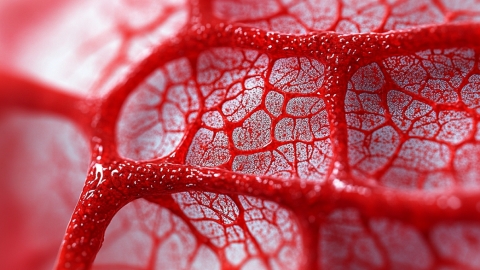What causes arterial aneurysms?
In general, arterial aneurysms may develop due to congenital abnormalities in arterial wall development, age-related degeneration of the arterial wall, hypertension, atherosclerosis, or arteritis. It is recommended to seek timely medical attention, identify the underlying cause, and receive symptomatic treatment under a doctor's guidance. Specific analyses are as follows:

1. Congenital arterial wall developmental abnormalities: During embryonic development, incomplete formation of the arterial wall structure—such as missing or weak elastic fibers—reduces the artery’s ability to withstand pressure, making it prone to aneurysm formation. If the aneurysm is small and asymptomatic, regular follow-up examinations are sufficient. Avoid strenuous exercise to reduce stress on the arterial wall.
2. Age-related degenerative changes in the arterial wall: With aging, elastic fibers in the arterial wall gradually deteriorate and break, reducing the wall’s elasticity and resilience, which can lead to localized bulging and aneurysm formation. Daily management should include controlling blood pressure and lipid levels, avoiding smoking and alcohol consumption, slowing arterial degeneration, and undergoing regular vascular screenings.
3. Hypertension: Poor long-term blood pressure control subjects the arterial wall to persistent high pressure, causing localized thinning and bulging that can result in an aneurysm. Patients should follow medical advice to use antihypertensive medications such as amlodipine besylate tablets, valsartan capsules, or metoprolol tartrate tablets to control blood pressure and maintain stable readings.
4. Atherosclerosis: Abnormal lipid metabolism leads to lipid deposition in the arterial walls, causing thickening, hardening, and reduced elasticity of the arteries, increasing the risk of localized aneurysm formation. Patients may take lipid-regulating medications such as atorvastatin calcium tablets, rosuvastatin calcium tablets, or simvastatin tablets as directed by a physician to improve atherosclerosis.
5. Arteritis: Conditions such as Takayasu arteritis or polyarteritis nodosa involve inflammatory irritation of the arterial wall, leading to vessel damage and thinning, which may subsequently form aneurysms. Patients should follow medical instructions to use anti-inflammatory drugs such as prednisone tablets, methylprednisolone tablets, or cyclophosphamide tablets. In severe cases, surgical interventions like aneurysm resection or arterial stent implantation may be required to repair damaged arteries and prevent rupture.
In daily life, maintain a light diet and reduce intake of high-salt, high-fat, and high-sugar foods. Engage appropriately in aerobic exercises such as walking or jogging to enhance vascular function and help control disease progression.




